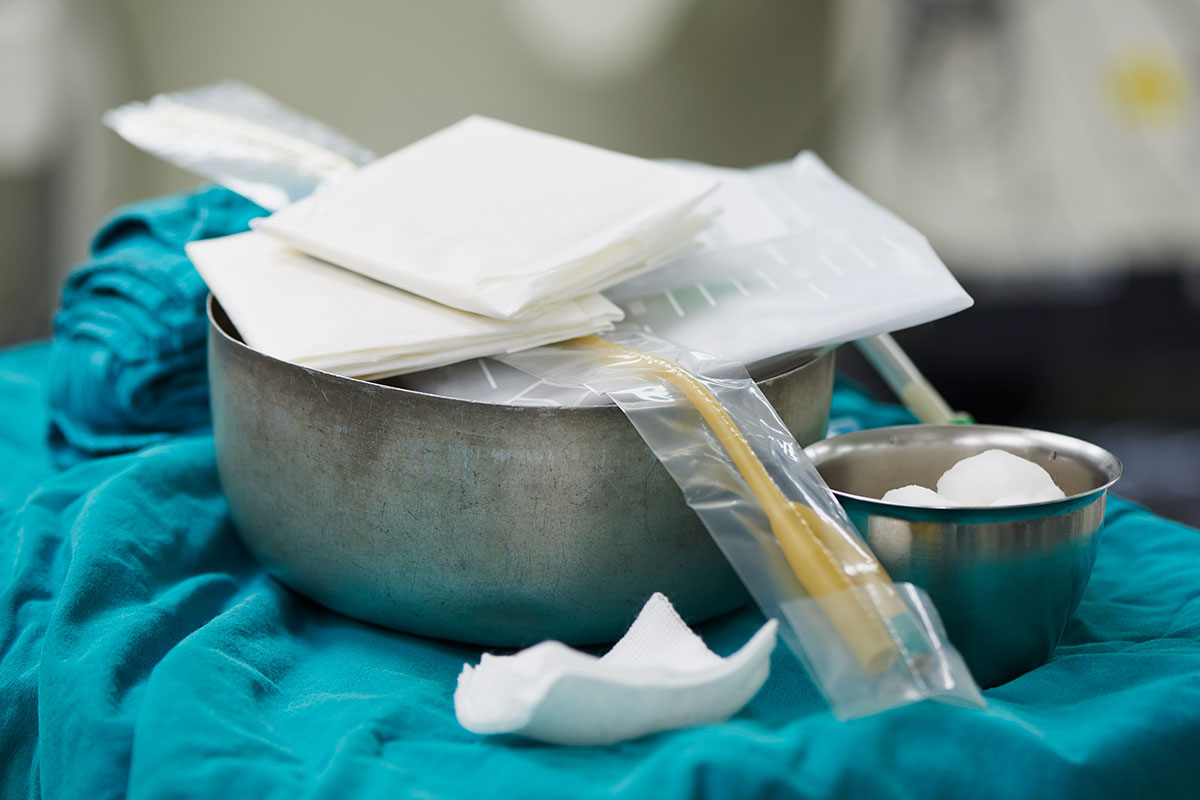Stand: February 1, 2021
During surgery, fluids can build up after the procedure. The body absorbs small amounts and breaks them down by itself. In the case of larger accumulations or to facilitate the healing process and prevent storage in the tissue, drains are often placed that drain fluids such as (wound) secretion, blood, bile, digestive juice or pus. In this ABC article, we explain how the drainage systems used for this purpose, composed of different components such as a sharp point, the hose and the collection bag with liquids, are disposed of.
–
With external drainage, the fluid is drained from the inside of the body to the outside using a hose. Hence the name of the system, which is derived from the English word “drain” (hose). Drainage has served its purpose when no more fluid is produced. Many waste management officers then ask the question: How is this disposed of? In fact, the disposal routes are just as diverse as the drainage systems themselves.
Disposal as sharps
The waste code number 180101 includes medical instruments that are primarily used in the operating theater and in the treatment rooms of the outpatient departments, but also in the context of blood draws, injections and wound care in patient rooms. These include scalpels, needles, lancing devices, needles of syringes and infusion systems, but also items with a similar risk of cuts and stab wounds, such as B. opened sharp-edged glass ampoules. For example, after a chest drainage, the scalpel blades must be placed in the cannula disposal container.
If the system has a needle or point, it is often removed and disposed of via the tip disposal container. However, caution should be exercised with this method as there is a risk of stab injuries. It is safer to dispose of the entire drainage system via the tip disposal container in accordance with AS 180101.
Since the syringe disposal boxes with a volume of 2 liters are usually quite small, it is not advisable to dispose of the entire drainage system in the container. It is therefore advisable to dispose of systems with sharp scalpels, needles or points in a larger system, which is also puncture-proof. These have a volume of 30 or 50 liters and, like the common drop boxes, are also approved according to DIN EN ISO 23907. The container has a double lid system that ensures the necessary safety when handling syringes. The containers are disposed of without further refilling or sorting together with the waste from AS 180104.
Disposal usually takes place under AS 180104
Systems without a needle can be disposed of in accordance with AS 180104. The LAGA provides the following procedure here: “For larger amounts of body fluids (e.g. urine, blood, drainage fluids) in containers, B. to ensure through the use of suitable absorbent materials that no liquid waste is released when this waste is provided and transported ”. If this cannot be ensured, the waste must be assigned to AS 180102. In addition, it must be ensured that the requirements of occupational health and safety are observed “and all health risks associated with blood and human excretions are taken into account”.
Discharge liquids into wastewater
Although some waste can be assigned to waste code 180104, it cannot be collected in plastic bags due to the high liquid content and the associated risk of leakage. Individual containers filled with blood or secretion can be emptied into drains provided for this, taking hygienic aspects into account, but the municipal waste water regulations must be observed. These include containers from autotransfusion systems, disposable suction systems whose fluid has not gelled, large amounts of body fluids from drainage systems or full Redon bottles. In addition, the hygienic and infection preventive aspects of occupational safety must be observed.
– .


